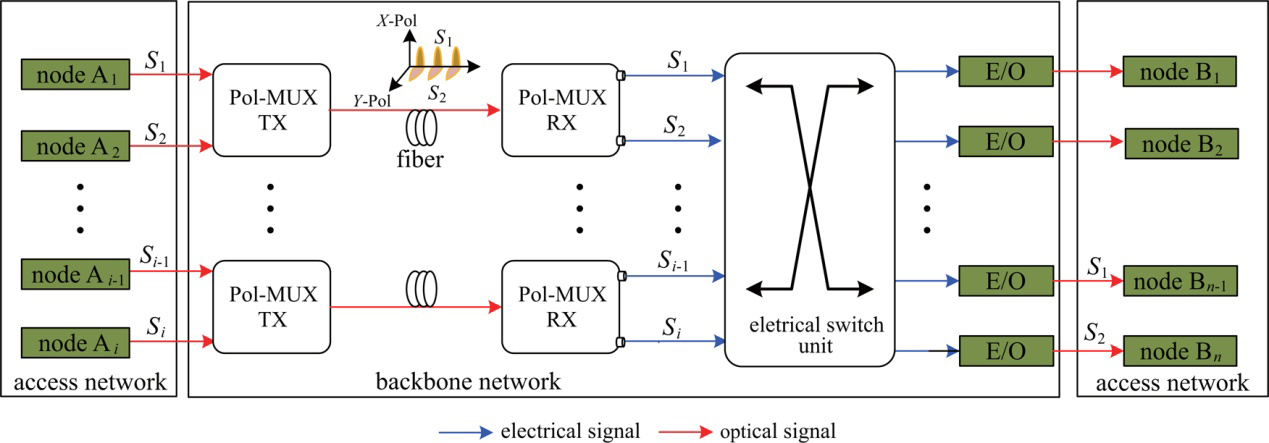Xinning Huang’s research team propose a novel scheme of simultaneous polarization separation and switching, based on the orthogonally-polarized four-wave mixing (FWM) effect, for ultra-high-speed polarization multiplexing (Pol-MUX) fiber networks such as 100-Gbps and 400-Gbps backbone networks. They use theoretical and experimental analysis of the vector theory of FWM to successfully achieve polarization separation and all-optical switching by utilizing a 100-Gbps dual polarization-quadrature phase shift keying (DP-QPSK) signal and two orthogonally-polarized pumps. Both of the polarization-separated QPSK signals have clear constellation diagrams, with root mean square (RMS) error vector magnitudes (EVMs) of 14.32% and 14.11% respectively. The wavelengths of idlers can be created at 30 different wavelengths, which are consistent with International Telecommunication Union-Telecommunication (ITU-T) wavelengths, by flexibly changing the wavelength of the pump light. Moreover, the idlers that have distinct wavelengths have power distributed in a range from 10 dBm to -15 dBm, which can support error-free transmission. The power penaltyis 5 dB lower than that of back-to-back (BTB) signal for both the X- and Y-polarization components measured at a bit error ratio (BER) of 3.8 x10(-3). Their experimental results indicate that this scheme has promising applications in future backbone networks.

(Original research article "Chinese Physics B Vol. 28, Issue 2, 024216 (2019) https://iopscience.iop.org/article/10.1088/1674-1056/28/2/024216 ")


